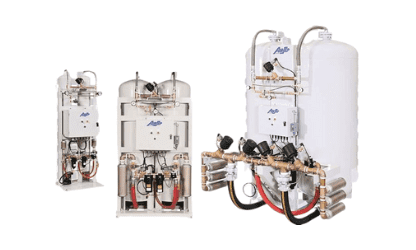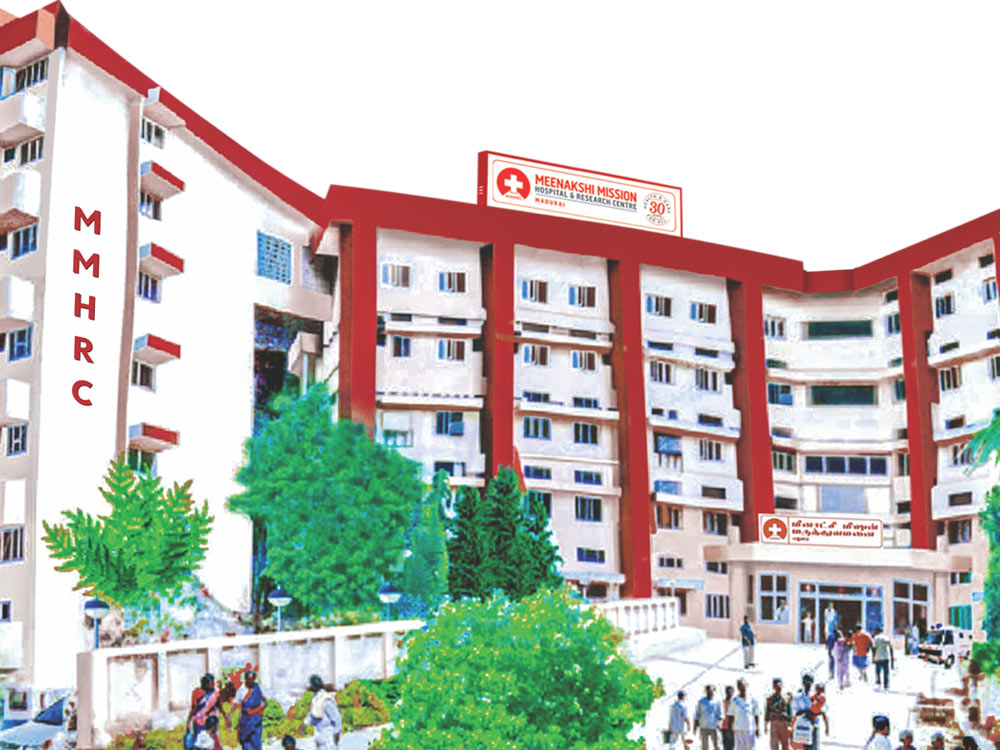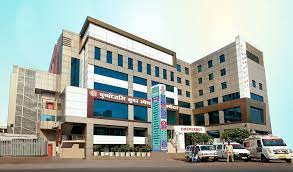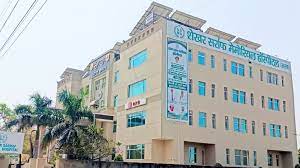Medical Oxygen Generator

The COVID-19 pandemic was a wake-up call for India’s healthcare infrastructure, particularly in Tier-2 and Tier-3 cities. During the crisis, the shortage of medical oxygen exposed a critical gap in hospital preparedness. However, in the post-pandemic era, this challenge has transformed into an opportunity for innovation. Across smaller cities, hospitals are increasingly adopting Airox’s Medical Oxygen Generator (PSA) technology to produce their own oxygen on-site. With the installation of a Oxygen Gas Generator, these hospitals are now becoming self-reliant and better equipped to handle emergency situations.
- The Shift Towards Oxygen Independence
Traditionally, hospitals relied on bulk oxygen cylinders or liquid medical oxygen (LMO) supplied by vendors located hundreds of kilometers away. This dependence created logistical bottlenecks and inconsistent supply chains, particularly for remote regions. Delays in oxygen delivery could mean the difference between life and death for patients in critical condition.
Recognizing this challenge, many Tier-2 and Tier-3 hospitals have turned to Oxygen Gas Generators powered by Airox’s most reliable Medical Oxygen Generator. These systems allow healthcare facilities to generate high-purity medical oxygen (typically 93±3%) directly from the air. The technology ensures a continuous, reliable, and cost-effective oxygen supply without depending on external sources.
- Understanding PSA Technology
A PSA Oxygen Gas Generator operates on the principle of Pressure Swing Adsorption. Atmospheric air, which contains about 21% oxygen and 78% nitrogen, is compressed and passed through a pair of adsorption towers filled with zeolite molecular sieves. These sieves selectively adsorb nitrogen while allowing oxygen to pass through as the product gas.
The system alternates between the two towers — while one adsorbs nitrogen, the other regenerates — ensuring an uninterrupted flow of oxygen. The process is highly efficient, requires minimal maintenance, and can operate continuously with only a small amount of electricity.
Benefits of Airox’s Medical Oxygen Generator Plants for Tier-2 & Tier-3 Hospitals
- Self-Reliance in Oxygen Supply
Installing a Airox’s Oxygen Gas Plant allows hospitals to become completely independent of external suppliers. This self-sufficiency ensures that even during transportation strikes, pandemics, or supply chain disruptions, oxygen production remains unaffected.
- Cost Efficiency
The recurring costs of purchasing and transporting cylinders add up significantly over time. Airox’s Oxygen Gas Generators drastically reduce these expenses. Once installed, the system only requires electricity and periodic maintenance, lowering the overall operational cost by up to 70%.
- Safety and Reliability
Managing liquid oxygen or cylinders involves multiple safety risks such as leaks, fire hazards, and handling injuries. A medical oxygen generator system eliminates these concerns by generating oxygen on-site at safe pressures. Moreover, the purity and flow are constant, ensuring that life-support systems receive a stable oxygen supply.
- Environmental Sustainability
Transporting oxygen cylinders over long distances consumes fuel and contributes to carbon emissions. By using a Medical Oxygen Gas Generator, hospitals minimize their carbon footprint while ensuring energy-efficient operations — a win for both the environment and the healthcare sector.
- Scalability and Easy Installation
Oxygen Gas Plants are modular in design, making them suitable for hospitals of all sizes. Whether it’s a 50-bed rural facility or a 500-bed city hospital, the capacity can be scaled as per there equirement. The systems can be installed within weeks and integrated seamlessly with existing central pipeline networks.
- Real-World Impact Across India
Over the past few years, many government and private hospitals in Tier-2 and Tier-3 regions such as Nashik, Indore, Nagpur, Coimbatore, and Guwahati have adopted Airox’s systems. This transformation has significantly improved patient care standards. For instance, during recent medical emergencies, hospitals with in-house oxygen generation facilities were able to maintain uninterrupted supply, even as nearby facilities struggled to source oxygen cylinders.
In Maharashtra and Tamil Nadu, healthcare authorities have encouraged the setup of Airox’s Oxygen Gas Plants in district hospitals under public-private partnerships. The initiative has not only enhanced healthcare resilience but also reduced operational costs for these hospitals.
- Technological Advancements and Automation
Modern PSA systems are equipped with advanced control panels, oxygen analyzers, and automated shutdown features to maintain consistent purity levels. Some manufacturers now integrate remote monitoring capabilities, enabling hospital staff or service providers to track system performance in real-time. This digital approach minimizes downtime and ensures preventive maintenance.
Furthermore, innovations in adsorbent materials and energy-efficient compressors have made Medical Oxygen Gas Generators more compact, reliable, and affordable. As a result, even smaller healthcare centers can now access technology that was once limited to large metropolitan hospitals.
- Supporting Government Initiatives
The Government of India, under various health infrastructure programs, has prioritized the installation of PSA-based oxygen plants in public hospitals. Initiatives under the National Health Mission (NHM) and PM-CARES have funded thousands of Medical Oxygen Generators units across the country. This widespread adoption is a significant step toward making India’s healthcare system more self-reliant and resilient to future crises.
- The Road Ahead
As healthcare demands continue to grow, especially in semi-urban and rural India, the role of PSA Oxygen Gas Plants will only become more vital. Beyond hospitals, these systems are also finding applications in industries such as pharmaceuticals, water treatment, and food packaging, further demonstrating their versatility.
For hospitals, the path to oxygen independence is no longer optional — it is a necessity. By investing in Medical Oxygen Generation technology today, hospitals in Tier-2 and Tier-3 cities are not just preparing for emergencies; they are setting new standards in patient care, sustainability, and operational efficiency.
- Conclusion
The journey toward oxygen independence marks a new chapter in India’s healthcare evolution. With the adoption of Oxygen Gas Generators, Medical Oxygen Gas Generators, and Oxygen Gas Plants supplied by industry leaders like Airox Technologies, hospitals in smaller cities are bridging the gap between urban and rural healthcare. This self-reliant approach ensures that no patient suffers due to oxygen shortages again — a true testament to technological progress and foresight.
FAQ About Medical Oxygen Gas Generator
FAQ 1: What is a Medical Oxygen Gas Generator and how does it work?
A Medical Oxygen Gas Generator uses Pressure Swing Adsorption technology to extract oxygen from air by removing nitrogen, providing a continuous supply of medical-grade oxygen.
FAQ 2: Why are Tier-2 and Tier-3 hospitals installing Airox’s Medical Oxygen Generator?
Hospitals install Medical Oxygen Gas Plants of Airox to generate oxygen on-site, reduce dependency on suppliers, cut costs, and ensure reliable oxygen availability.
FAQ 3: How do Airox’s Oxygen Gas Plants improve hospital efficiency?
They ensure a constant oxygen supply, lower operational costs, reduce logistics issues, and improve patient care efficiency.
FAQ 4: What role does Airox Technologies play in promoting PSA oxygen solutions?
Airox Technologies provides advanced Medical Oxygen Gas Generators and Oxygen Gas Plants, helping hospitals achieve oxygen independence across India.
FAQ 5: Are Medical Oxygen Gas Generators safe and eco-friendly?
Yes, they are safe, low-maintenance, and eco-friendly, producing oxygen on-site without transportation or storage risks.



